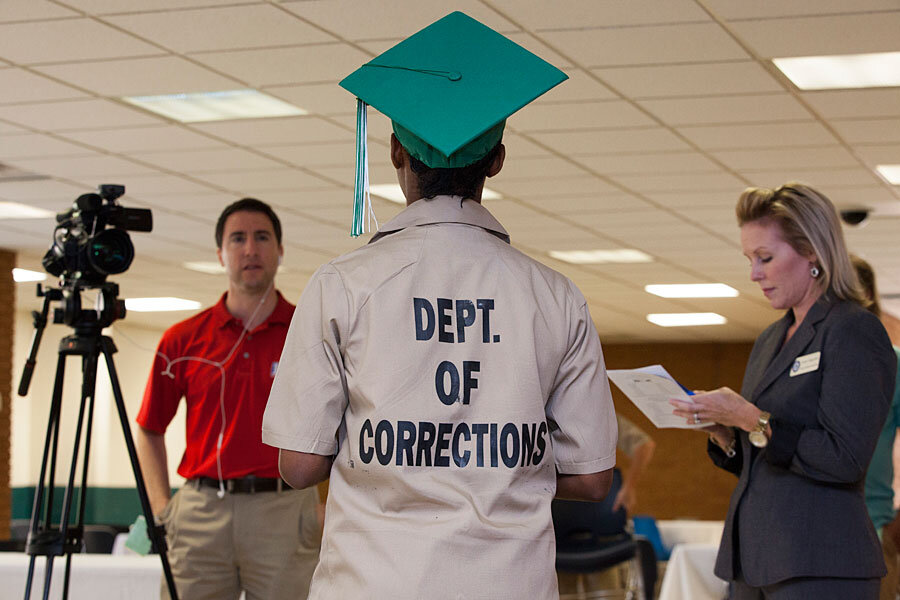Prison inmates best Harvard debate team: Does prison education work?
Loading...
After being crowned world champions last year, the Harvard debate team faced their fiercest competitors yet: three prison inmates from the Eastern New York Correctional Facility, who defeated the prestigious team last month.
As the Wall Street Journal’s Leslie Brody reported, being incarcerated while preparing for a debate has its challenges. Inmates could not access the Internet for research, and had to request from prison administration specific texts, a process that can take weeks.
And they had to defend a policy to which they were personally opposed: “Public schools in the United States should have the ability to deny enrollment to undocumented students.”
The debate’s judge said the Harvard team didn’t respond to some of the inmates’ strongest arguments, but that both sides were excellent.
The three men are part of the Bard Prison Initiative, a nearly 15-year-old program that provides qualified inmates with an opportunity to earn tuition-free degrees from Bard College. Applicants go through a rigorous and competitive process – the acceptance rate is about 10 percent. According to its website, 300 incarcerated men and women are enrolled in the program, which offers more than 60 academic classes.
Alumni have moved on to successful lives, working in “leadership positions serving people who are homeless, suffer from HIV-AIDS, or are themselves formerly incarcerated ... Among some notable highlights: a playwriting fellow at the Public Theater; an academic fellow in PhD studies at NYU; and a Yale Divinity student.”
According to The New York Times, the program has a 2.5 percent recidivism rate for those who complete their degree. But The Marshall Project’s Dana Goldstein suggested only evaluating the program's success by its recidivism rate could be misleading:
The Bard Prison Initiative ... has been celebrated by Gov. Andrew Cuomo for its 5 percent recidivism rate, a figure generated by the program’s internal research, which did not study a control group. But Max Kenner, the founder of the Bard initiative, says he does not consider low recidivism the best marker of his program’s success. “If our recidivism rates stay so low, I start to worry that we’re not taking suitable risks,” he says; the program might just be cherry-picking the inmates most likely to succeed after prison.
In 2013, RAND Corporation released the most comprehensive meta-analysis of correctional education to date, which took into account the “motivation and other differences between correctional education recipients and non-recipients.”
The study showed that correctional education programs reduced the recidivism rate of its participants rate by 43 percent. Moreover, participants had a 13 percent higher employment rate, and those who took vocational training were 28 percent more likely to be employed.
The study also found benefits to the average taxpayer, showing “a $1 investment in prison education [reduces] incarceration costs by $4 to $5 during the first three years post-release.”
So if prison education lowers the recidivism rate and makes the prison system more efficent, why hasn’t more money been invested in programs?
In 1994, Congress banned prisoner eligibility for Pell grants, making it nearly impossible for many inmates to afford an education. But last summer, the Obama administration announced a pilot program to offer Pell grants to a small number of people currently incarcerated. Meanwhile, as the prison population dropped in 2014, reversing a trend, according to the Bureau of Justice Statistics, a study by the bureau showed recidivism rates as high as 68 percent within three years of release.







